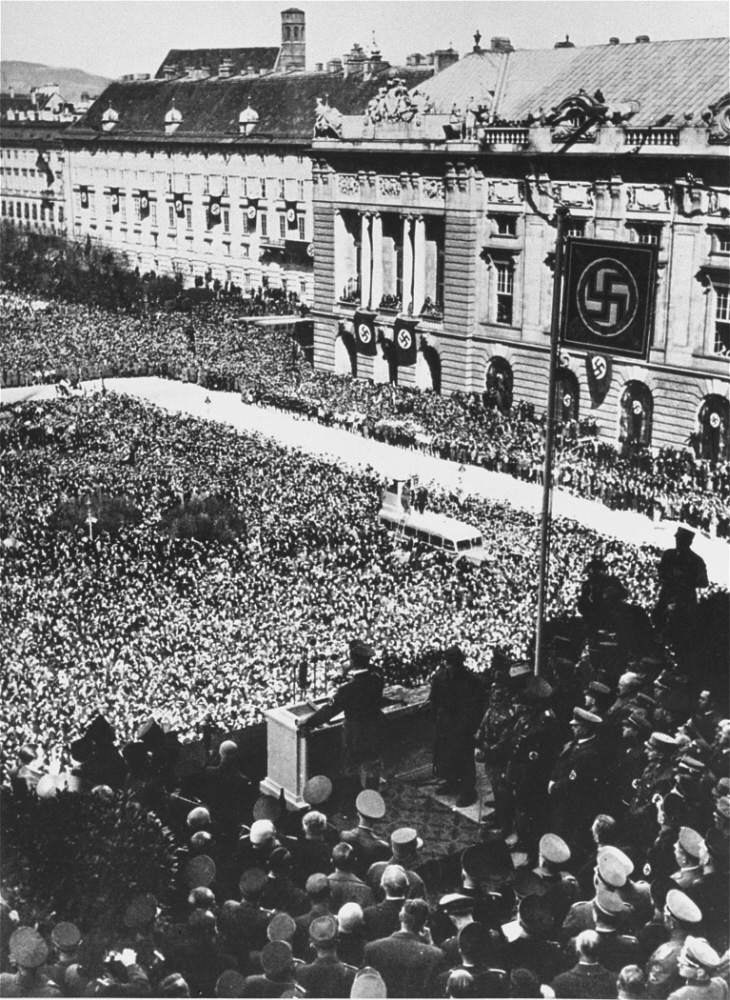
Germany Annexes Austria
The Anschluss expanded the German Reich and set into motion a Jewish refugee crisis.
View newspaper articlesAustria had endured a prolonged period of economic stagnation, political dictatorship, and intense Nazi propaganda, when German troops entered the country on March 12, 1938. The Germans received enthusiastic support from most of the population, and Austria was incorporated into Germany the next day. In April, this German annexation was retroactively approved in a plebiscite manipulated to indicate that about 99 percent of the Austrian people wanted the union (known as the Anschluss) with Germany. Neither Jews nor Roma (Gypsies) were allowed to vote in the plebiscite.
Widespread antisemitic actions and political violence followed quickly on the heels of the Anschluss. Austria’s leading politicians were imprisoned, and anyone opposing Nazi rule was subject to arrest, torture, and death. Jews particularly were attacked and humiliated on the streets. The Gestapo, along with Austrian Nazis and sympathizers, looted Jewish belongings, seized Jewish businesses, and arrested those who refused to surrender their property. Furthermore, the Nazis applied German anti-Jewish legislation almost immediately, forcing Jews from their positions, and essentially expelling them from the country’s economic, social, and cultural life. At the time of the Anschluss, Austria had a Jewish population of about 192,000, representing almost 4 percent of the total population. Tens of thousands fled Nazi persecution, and by December 1939 only 57,000 Jews remained in Austria.
Newspaper Articles about this Event
5,679 articles in 556 newspapers
-
"Strange Interlude"
, The Pittsburgh Courier, Pittsburgh, Pennsylvania
Learn More about this Historical Event
- Austria (Encyclopedia Article)
- Vienna (Encyclopedia Article)
- German Prewar Expansion (Encyclopedia Article)
Bibliography
Bukey, Evan Burr. Hitler’s Austria: Popular Sentiment in the Nazi Era, 1938-1945. Chapel Hill: University of North Carolina Press, 2000.
Fuchs, Martin. Showdown in Vienna: The Death of Austria. New York: Putnam’s Sons, 1939.
Low, Alfred. The Anschluss Movement, 1931-1938, and the Great Powers. Boulder, CO: East European Monographs, 1985.
Wagner, Dieter. Anschluss: The Week Hitler Seized Vienna. New York: St. Martin’s Press, 1971.
Wimmer, Adi. Strangers at Home and Abroad: Recollections of Austrian Jews Who Escaped Hitler. Jefferson, NC: McFarland, 2000.
Search tips
These dates and keywords are associated with this historical event.